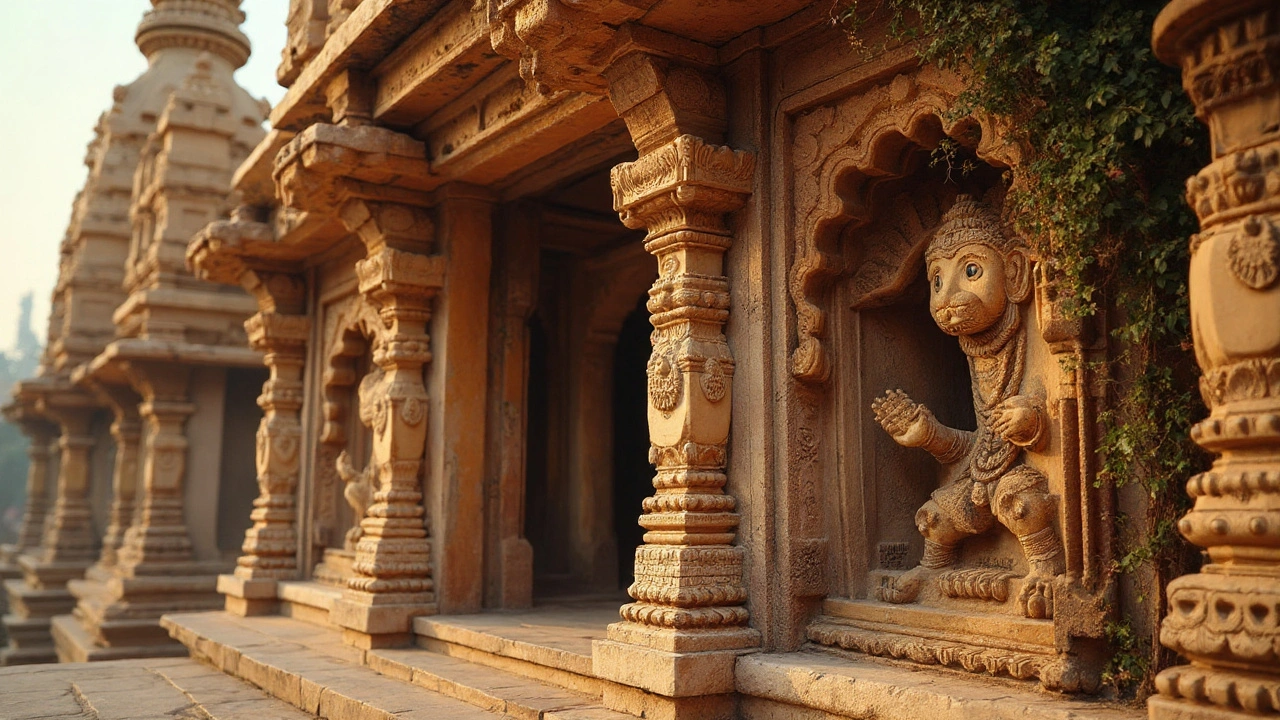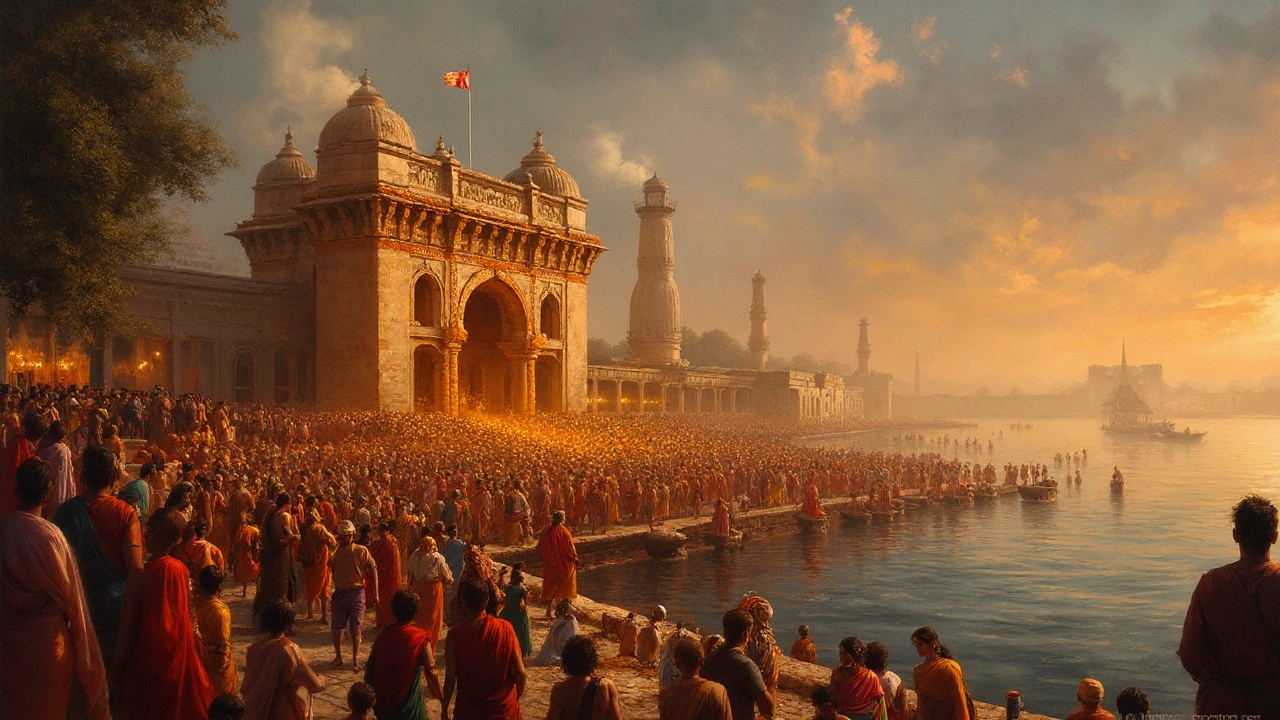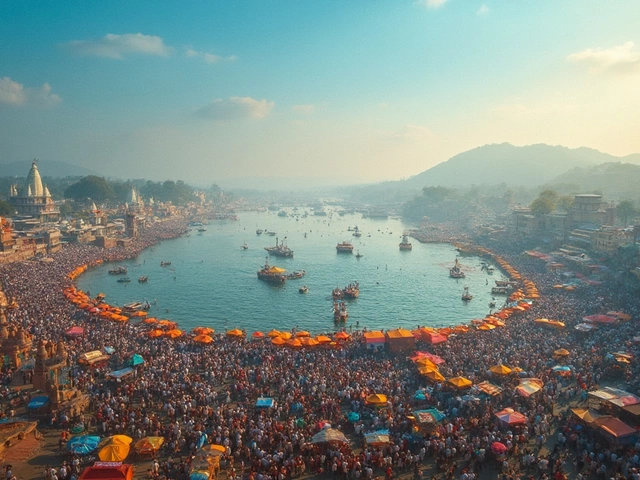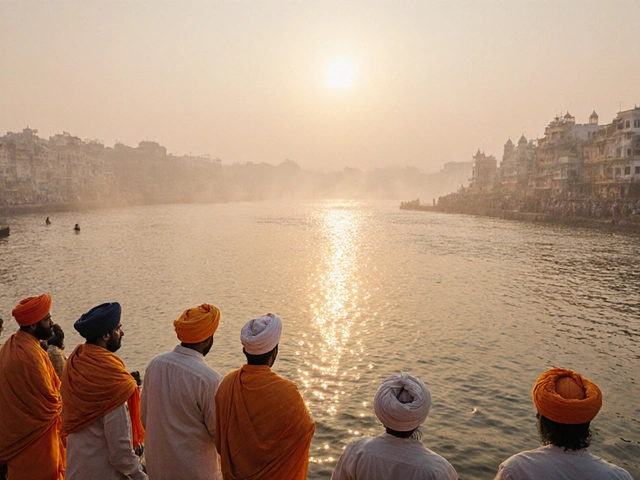Hanuman - The Most Celebrated God in Allahabad (Prayagraj)
Hanuman Temple Quiz
Hanuman is a Hindu deity renowned for his boundless strength, unwavering devotion to Lord Rama, and role as protector of the faithful. In the heart of Prayagraj (formerly Allahabad), Hanuman enjoys a level of reverence that makes his name synonymous with the city’s spiritual identity.
Why Hanuman Stands Out in Allahabad
Among the dozens of temples scattered across Prayagraj, the Hanuman Allahabad shrine draws the highest daily footfall. According to the local municipal tourism board, roughly 8,000 devotees visit the Hanuman Mandir each day during regular weeks, and the number swells to over 30,000 on special occasions like Hanuman Jayanti. The deity’s popularity stems from three key factors:
- Mythological relevance: Hanuman’s role in the epic Ramayana as the ultimate devotee resonates with the city's deep‑rooted belief in dharma.
- Protective aura: Residents often invoke Hanuman for safety during floods of the Ganga and Yamuna rivers.
- Cultural integration: Songs, street art, and local folklore feature Hanuman more frequently than any other deity.
Historical Footprint of Hanuman in Prayagraj
Historical records from the 17th‑century Mughal era mention a modest shrine dedicated to Hanuman near the old city walls. The present‑day temple, however, was reconstructed in 1895 under the patronage of Maharaja Jai Singh of the Bundela dynasty. Architectural historians note that the temple’s golden dome and towering Shikhara blend North Indian Nagara style with subtle colonial influences, a unique visual marker in the city’s skyline.
Older travelers’ diaries, such as those of British officer James Wood (1840), remark on nightly chants of "Hanuman Chalisa" echoing through the alleys- an early testament to the deity’s communal pull.
Hanuman Mandir - The Core Pilgrimage Spot
The main shrine, popularly called Hanuman Mandir, sits on Madan Mohan Road, a stone’s throw from the confluence of the Ganga, Yamuna, and the mythical Saraswati. Key attributes of the temple include:
- Iconography: A 7‑foot bronze statue of Hanuman holding a mace (gada) and a mountain (Sanjivani) in his left hand.
- Daily rituals: Six aartis, a morning “Abhishek” with sandalwood paste, and an evening “Bhajan” session.
- Special features: A dedicated “Sankat Mochan” hall where devotees write their troubles on paper and leave them for the deity.
The temple’s management maintains a free “prasad” kitchen, feeding up to 5,000 pilgrims on festival days. The organized volunteer system ensures that the premises stay clean, reflecting the community‑driven ethos surrounding Hanuman worship.
Festivals That Light Up the City
Two annual events dominate the Hanuman calendar:
- Hanuman Jayanti (full moon of Chaitra): A city‑wide procession starts from the temple, chanting “Hanuman Bajrangbali” while drums beat in sync. The procession ends at the banks of the Ganga, where devotees perform a ceremonial dip.
- Sankranti (mid‑January):** On this solar transition day, the temple holds a massive “Parikrama” where thousands walk clockwise around the sanctum, reciting the “Hanuman Chalisa.”
Visitors report an electric atmosphere: lanterns line the streets, street vendors sell sweet “kesari bhog,” and local musicians play the “dholak” late into the night.

How Hanuman Compares to Other Local Deities
| Deity | Primary Temple in Prayagraj | Major Festival | Approx. Daily Visitors |
|---|---|---|---|
| Hanuman | Hanuman Mandir (Madan Mohan Road) | Hanuman Jayanti | 8,000‑30,000 (peak) |
| Saraswati | Saraswati Temple (Triveni) | Saraswati Puja (Vasant Panchami) | 2,500‑5,000 |
| Ganesh | Ganesh Temple (Alopi Devi Road) | Ganesh Chaturthi | 4,000‑7,000 |
| Shiva | Kashi Vishwanath Temple (Old City) | Maha Shivaratri | 5,000‑10,000 |
While each deity enjoys a loyal following, Hanuman’s numbers and the intensity of his festivals consistently outpace the others, cementing his status as the city’s most famous god.
Connecting Hanuman to Prayagraj’s Broader Spiritual Landscape
Hanuman’s presence is interwoven with the city’s larger religious narratives:
- Kumbh Mela: Every 12 years, millions converge at the Triveni Sangam. Pilgrims often start their journey with a visit to Hanuman Mandir, seeking strength for the arduous pilgrimage.
- Sangam rituals: The belief that Hanuman protects travelers crossing the river is echoed in the local practice of chanting his name before taking a dip.
- Literary ties: The 16th‑century poet Tulsidas, author of the “Ramcharitmanas,” frequently praised Hanuman, reinforcing the deity’s cultural imprint in the region.
Practical Tips for Visiting the Hanuman Temple
- Timing: The temple opens at 5:00AM and closes at 9:00PM. Early mornings are the quietest for meditation.
- Dress code: Modest attire-no shorts or sleeveless tops-is required. Footwear must be removed at the entrance.
- Offerings: Traditional offerings include til (sesame seeds), bananas, and sweets made of jaggery. Cash donations are accepted at the donation box.
- Photography: Allowed in the courtyard but prohibited inside the sanctum to respect worshippers.
- Accessibility: The temple has a wheelchair‑friendly ramp on the north side and a dedicated prayer hall for senior citizens.
Following these simple guidelines ensures a smooth, respectful experience that aligns with the community’s reverence for Hanuman.
Related Spiritual Sites Worth Exploring
If Hanuman’s aura captivates you, consider adding these nearby attractions to your itinerary:
- Alopi Devi Temple: A shrine dedicated to the goddess who is said to have vanished after answering a devotee’s prayer.
- Anand Bhavan Museum: Once the residence of the Nehru family, now showcasing artifacts that highlight India’s freedom struggle; the museum’s garden houses a small Hanuman statue.
- Purani Katra Mosque & Sri Krishna Temple: A striking example of Prayagraj’s secular coexistence, where locals often exchange festival sweets with Hanuman devotees.
Each site offers a different facet of the city’s layered heritage, enriching the visitor’s understanding of why Hanuman remains the most celebrated god.
Frequently Asked Questions
Who is Hanuman and why is he important in Allahabad?
Hanuman is a Hindu deity famed for superhuman strength, devotion to Lord Rama, and the ability to protect devotees from harm. In Allahabad (Prayagraj), he embodies the city’s yearning for safety during the monsoon floods and during the massive Kumbh Mela pilgrimages, which is why his shrines receive the highest footfall.
Where is the main Hanuman temple located in Prayagraj?
The principal shrine, known as Hanuman Mandir, sits on Madan Mohan Road, just a few minutes’ walk from the Triveni Sangam where the Ganga, Yamuna, and mythical Saraswati rivers meet.
When are the biggest Hanuman festivals celebrated in Allahabad?
The two most spectacular celebrations are Hanuman Jayanti (full moon day in Chaitra, usually March/April) and Sankranti (mid‑January). Both feature city‑wide processions, night‑long bhajans, and massive communal feasts.
How can tourists respectfully visit the Hanuman Mandir?
Arrive early to avoid crowds, wear modest clothing, remove shoes before entering, keep voices low, and refrain from photography inside the sanctum. Offering simple items like bananas or sesame seeds is appreciated, but cash donations are also welcome.
What other prominent deities are worshipped in Allahabad?
Besides Hanuman, Prayagraj hosts important shrines for Goddess Saraswati (the river goddess), Lord Ganesh, Lord Shiva (at the Kashi Vishwanath Temple), and local folk deities like Alopi Devi. Each has its own festival calendar, but none match Hanuman’s daily visitor count.





